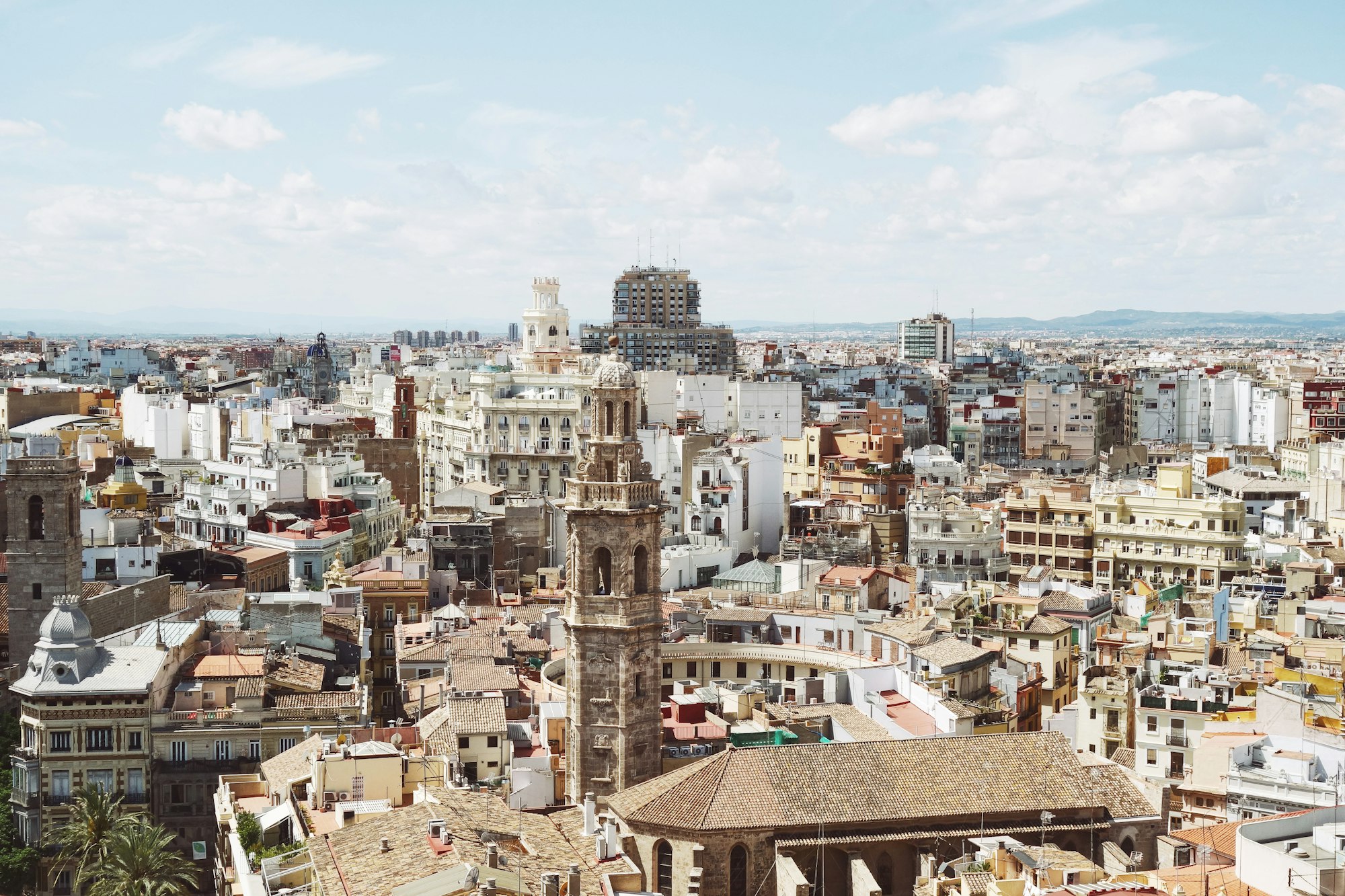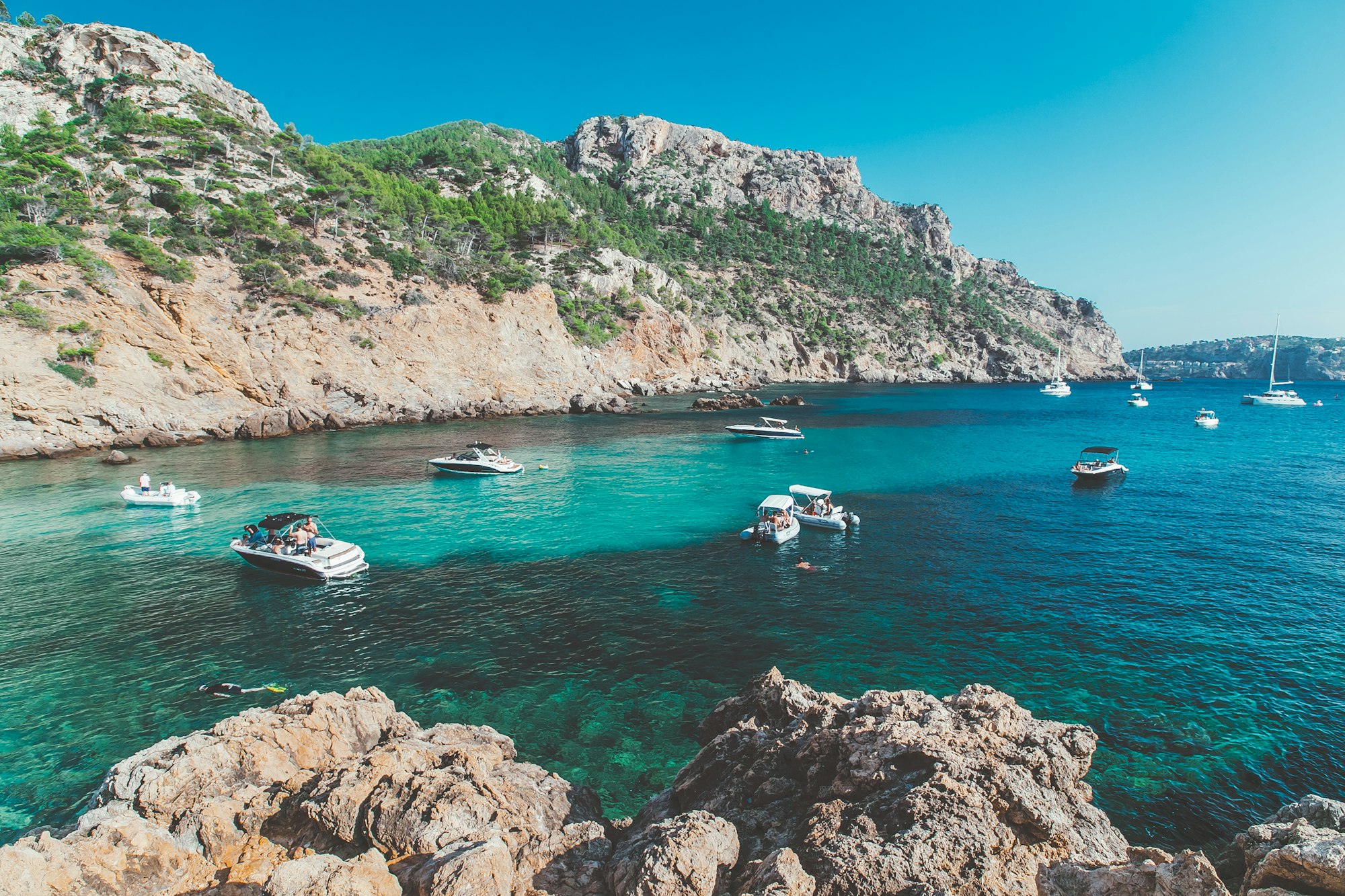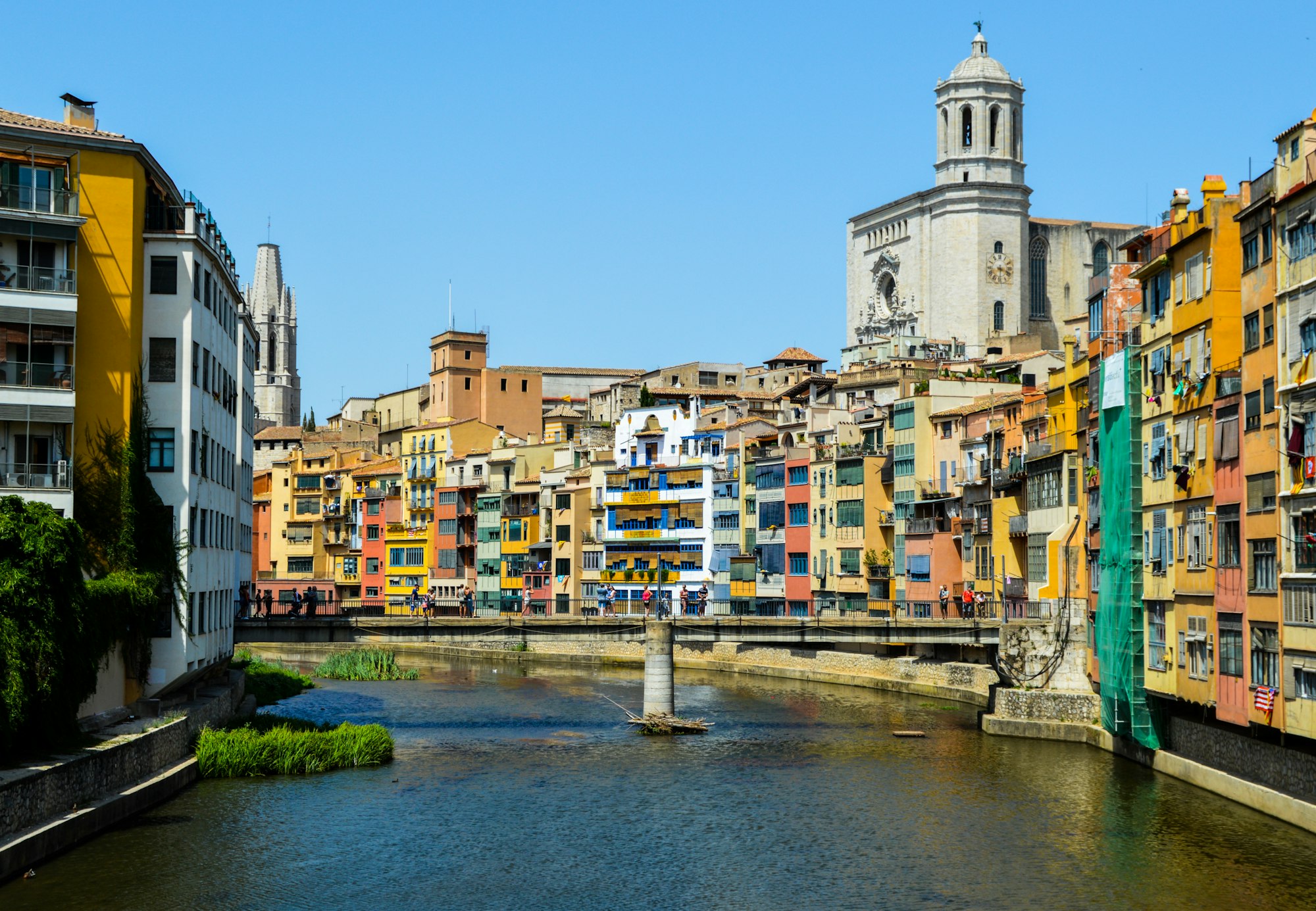How to get from Barcelona to Marseille
Choose your route from Barcelona to Marseille in minutes. This guide compares flights, trains, buses, and a simple drive, with door to door times, stations, airport shuttles, border checks, and small booking habits so your day feels smooth from start to finish.

The short version
There are four simple routes between the two cities. Fly when speed matters, take a train for a calm ride city center to city center, choose a coach for the lowest base fare, or drive if you want freedom to stop in seaside towns.
Air time is about one hour and a bit, trains often take five to six hours with a single change, coaches need seven to ten hours depending on traffic, and a straightforward drive is around six hours of wheel time before breaks..
Ways to travel at a glance
Scan this list first. You will know your mode in seconds, then the sections below give step by step notes that keep the day smooth.
- Flight from Barcelona El Prat to Marseille Provence. Door to door is near three hours when you travel light and pick good city transfers.
- Train from Barcelona Sants to Marseille Saint Charles. Some dates show a direct service; many dates use one easy change in France at Perpignan, Narbonne, Montpellier, or Nimes.
- Coach daytime and overnight between Barcelona and Marseille with clear luggage rules and simple boarding.
- Car on AP 7 in Spain then A 9 and A 7 in France, tolls on the French section, many service areas for fuel and food.
Flights from Barcelona to Marseille
Flying removes the long land leg and gives a clean schedule that works for a weekend plan or a short business trip.
Direct flights link Barcelona El Prat with Marseille Provence on many days in warm months and with a smaller pattern in cooler months. Air time sits close to one hour fifteen minutes. Add airport steps and the shuttle into town and the whole move is often near three hours from a central hotel in Barcelona to the hill above the port in Marseille.
- Barcelona El Prat has two terminals. The suburban train and the metro reach the city from Terminal 2, and a free shuttle links the terminals.
- From Marseille Provence ride the direct airport bus to Saint Charles station, or use the free airport shuttle to Vitrolles station for regional trains when timing matches.
- Carry on only saves minutes at both ends. A checked bag adds time at drop off and at the belt.
- Early flights feel calmer and place you in Marseille with most of the day ahead of you.
Trains from Barcelona Sants to Marseille Saint Charles
Trains give space, a table, and coast to countryside views. You start in the heart of Barcelona and arrive above the city in Marseille with the metro downstairs.
Look first for a direct service between Barcelona Sants and Marseille Saint Charles. When it runs, the ride is simple and comfortable. On other dates you change once in France, often at Perpignan or Narbonne or Montpellier or Nimes. The change is straightforward and signs are clear. Total time is commonly five to six hours. Point to point tickets include a seat. With an Interrail or Eurail pass you book a reservation ahead to secure a place.
- Pick an aisle seat if you want a quick exit at Saint Charles where people stand before arrival.
- Bring a small picnic from Sants and a bottle of water. On board bars exist but a ready sandwich keeps the plan flexible.
- Carry your passport or national ID. The border is inside Schengen, yet rail police may check documents on board.
- Check both Renfe and SNCF for fares and times. Buying earlier often opens nicer prices and more seat choice.
Coaches by day and by night
Coaches link the two cities with a steady timetable and a clear price ladder. They help when trains feel busy or when you decide late.
Daytime rides typically run seven to ten hours depending on traffic near large towns. Night coaches leave Barcelona in the evening and reach Marseille in the morning. Seats recline, there is a toilet on board, and drivers pause at service areas along the highway for rest.
- Departures in Barcelona often use Estacio Nord near Arc de Triomf. Arrivals in Marseille use Saint Charles where you reach the metro by escalator.
- Pack a small pillow and a light sweater for night runs because air vents can feel strong during the ride.
- Coach tickets usually include one large bag in the hold and one cabin bag. Check the allowance during booking so you do not pay at the gate.
- Plan a slow coffee on arrival to reset your back and stretch before you start the day.
Driving from Barcelona to Marseille
Driving gives you control of stops and opens small towns that fast trains speed past. The route shadows the Mediterranean for a long stretch.
Leave Barcelona on AP 7 toward Girona and the French border. In France the road becomes A 9 through Perpignan and on across the plains near Narbonne and Montpellier. Near Salon de Provence follow A 7 toward Marseille and then city routes toward Vieux Port or your hotel. Wheel time is near six hours in light traffic. Add fuel and food breaks and you arrive in seven to eight hours feeling fresh.
- Tolls apply on many French sections. Pay by card at the booth and keep the receipt.
- Service areas appear often with fuel, food, and clean bathrooms. Use them to set a good rhythm with short walks.
- Marseille runs a low emission zone. Rental cars are fine; if you drive your own, check local rules before you enter the inner districts.
- Parking near the old port is tight. Underground garages around the station and the quays help, then you walk ten minutes to your street.
Is there a ferry
People ask about a direct boat because both cities have large ports and ferries to many places.
A regular passenger ferry on the exact Barcelona to Marseille route is not part of the standard network. If you want sea time, build a mixed trip through another port, yet that adds planning and changes the nature of the journey.
Stations and simple transfers
Knowing your entry and exit points removes stress and saves minutes at the next step.
In Barcelona the main points for this route are Sants station for trains, Estacio Nord for many coaches, and El Prat for flights. Sants sits on metro lines L 3 and L 5. Estacio Nord is next to Arc de Triomf on L 1 and a short walk from Parc de la Ciutadella. In Marseille you arrive at Saint Charles on the hill with metro lines below you; a short ride reaches Vieux Port. From the airport the direct bus runs to Saint Charles through the day.
- Mark the nearest metro entrances on your phone map before you travel.
- Carry a few coins for vending machines if you reach a station late at night.
- Watch the big station boards and listen for platform calls. If a platform changes, staff guide people in the right direction.
Tickets, prices, and planning habits
Prices move with demand. A couple of small habits help you land good seats at fair numbers and keep nerves low on travel day.
For flights, midweek and off peak hours often feel easier on the wallet. For trains, earlier purchase opens lower fare buckets and more seat choice. For coaches, late bookings are common and prices are stable across a few dates. Consider mixing modes if your times are fixed one way and flexible the other.
- Set simple alerts a few weeks out for your dates. When new timetables open, fresh seats appear.
- On trains pick seats near the center of the coach for a quieter ride and easy luggage racks.
- On planes sit forward if you want to reach the airport bus line first at Marseille Provence.
- Keep screenshots of tickets and seat numbers so platform checks stay quick even if signals wobble indoors.
Comfort, luggage, and accessibility
The route is friendly for different needs. With a little thought about the last steps at stations and terminals the day feels smooth.
On trains you bring bags on board and place them on overhead racks or at carriage ends. Lifts and escalators run at Sants and Saint Charles, though a short stair can appear on older platforms. On coaches you hand large bags to the driver for the hold and carry a small bag to your seat. On flights the usual cabin limits apply and staff assist at gates if you request help in advance.
- Wheelchair users find level boarding zones at major stations; book assistance for ramps and staff will meet you on the platform.
- Keep heavy items low in your backpack so it rests well on your lap during checks.
- Carry a light layer because air conditioning on trains and coaches can feel cool after an hour.
Two simple plans you can copy
These templates keep moves short, meals good, and energy steady. Adjust times to fit your date and they still work.
- Fast flight plan Morning metro or train to El Prat, direct flight, airport bus to Saint Charles, drop bags, lunch near Vieux Port, afternoon walk along the quays, dinner in Le Panier, quiet night.
- Scenic rail plan Morning train from Sants, change at Montpellier with one hour to stretch and have coffee, arrive at Saint Charles in the afternoon, metro to the old port for sunset and a slow waterfront stroll.
Q and A
Short answers that match popular searches and the questions people ask at ticket desks.
How long does the train take from Barcelona to Marseille? Plan five to six hours in total; some dates show a direct service and others need one easy change in France.
Is flying faster door to door? With only a cabin bag and smooth transfers the whole move is near three hours.
Is there a direct train every day? Not every day. When a direct appears, take it; when it does not, one change keeps the day tidy.
Do I need a passport on the train? Spain and France sit inside Schengen. Carry a passport or national ID because police can check documents on board.
Is there a night train? A regular night train for this exact route is not on the schedule. Use an overnight coach if you want to travel while resting.
Where do trains depart and arrive? Barcelona Sants for departure and Marseille Saint Charles for arrival, both with metro lines underneath.
Can I bring a bike? Space for full size bikes on fast trains is limited and rules vary; folding bikes packed small are easier. Coaches accept bikes only in boxes on some routes, so check before you buy.
Is there a simple sea route? No standard passenger ferry links Barcelona and Marseille as a daily service.
Final note
Choose your mode, lock one or two small details like the airport bus or the change station, and the line from Barcelona to Marseille draws itself. Carry light, keep five spare minutes at each link, and the day will feel easy from the first platform to the last square above the old port.











